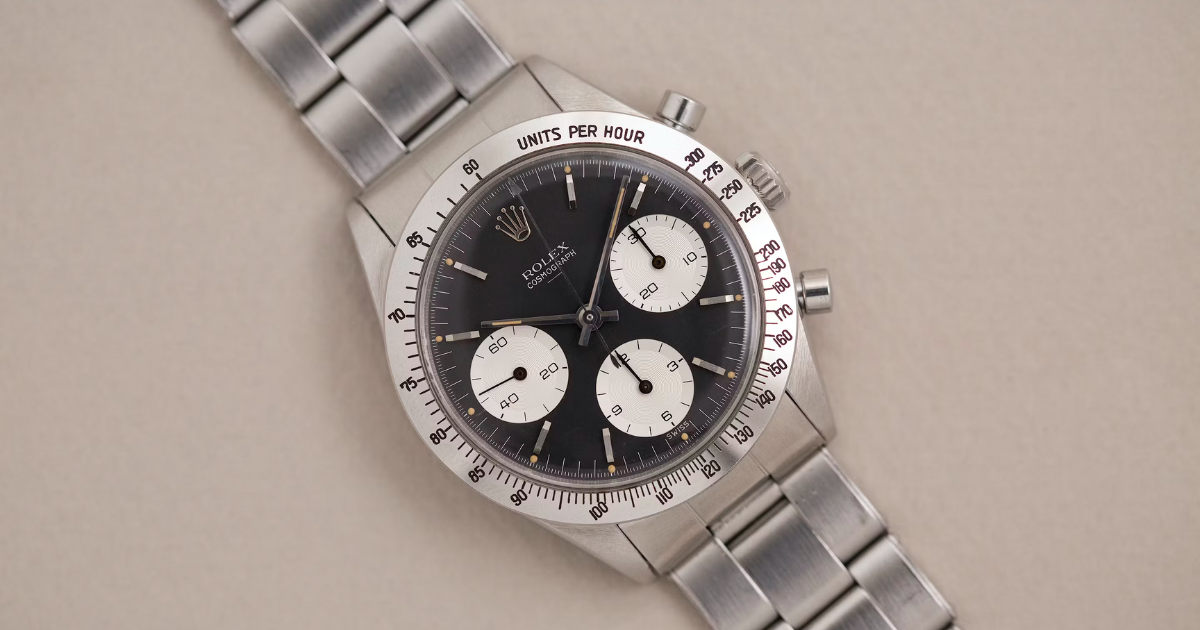Watch Guides
Dancing with the Moon: The Allure of Moon Phase Watches
Moon phase watches have a fascinating history rooted in both science and aesthetics. They trace back to ancient civilizations like the Babylonians, who first observed lunar cycles. However, the modern concept of moon phase complications in watches emerged in the 17th century, pioneered by astronomers like Galileo Galilei and Johannes Kepler.
These early mechanical moon phase watches were intricate, often featuring gears and wheels to accurately depict the moon’s phases. They served both scientific and practical purposes, aiding sailors, farmers, and astronomers in tracking lunar patterns.
What are moon phase watches?
Moon phase complications in watches refer to a feature that tracks and displays the current phase of the moon as it appears in the sky. The purpose of this complication is both practical and aesthetic. Practically, it helps people track lunar cycles for various reasons, such as planning agricultural activities, navigating at sea, or simply appreciating celestial events. Aesthetically, moon phase displays add a touch of elegance and sophistication to watch dials, often appealing to enthusiasts who appreciate traditional craftsmanship and the connection to celestial movements.
Moon phase watches typically work using a gear system that translates the 29.5-day lunar cycle into a visual display on the watch dial. The mechanism involves a wheel with 59 teeth (representing 59 days, or two lunar cycles) that advances one tooth each day, driven by the watch’s movement. A stationary disk with two identical moons (often depicted in gold or a luminescent material) is placed above the wheel. As the wheel turns, it gradually covers or reveals the moon(s), simulating the waxing and waning phases of the moon as seen from Earth.
There are several types of moon phase displays commonly found in watches:
- Traditional Moon Phase: This type shows the progression of the moon’s phases in a semi-circular aperture on the watch dial. It typically includes two moons, one full and one new, with additional markers for intermediate phases like first quarter and last quarter.
- Realistic Moon Phase: Some watches aim for a more realistic depiction of the moon’s appearance in the sky. These displays show a detailed image of the moon that corresponds to its actual phase, often with a darkened portion to represent the shadowed area.
- Digital Moon Phase: In digital watches, moon phase complications can be displayed digitally, either as a text description (e.g., “Full Moon,” “New Moon”) or as a graphical representation.
- Triple Moon Phase: This type of display includes three moons instead of two, allowing for a more detailed representation of the moon’s phases, including additional intermediate phases.
- Moon Age Indicator: Some watches feature a moon age indicator, which shows the number of days since the last new moon. This can be useful for more precise lunar tracking.
These different types cater to varying preferences in terms of design, accuracy, and complexity, offering watch enthusiasts a range of options to choose from based on their tastes and needs.
Types of moon phase displays
The origins of moon phase complications in timekeeping trace back to ancient civilizations’ observations of lunar cycles, such as the Babylonians and Egyptians. However, the incorporation of moon phase complications into mechanical clocks and watches began to take shape during the Renaissance period, particularly in the 17th century, driven by advancements in astronomy and horology.
One notable milestone in the evolution of moon phase watches is the work of astronomers like Galileo Galilei and Johannes Kepler, who laid the groundwork for understanding the movements of celestial bodies, including the moon. Their observations and calculations contributed to the development of mechanical devices that could track lunar phases with greater accuracy.
In horology, the 18th and 19th centuries saw significant advancements in moon phase complications. Watchmakers like Breguet, Patek Philippe, and Jaeger-LeCoultre incorporated moon phase displays into their timepieces, often accompanied by other complications like calendars and chronographs. These watches were highly sought after by astronomers, navigators, and aristocrats alike, showcasing both technical prowess and artistic elegance.
Notable milestones and advancements in the evolution of moon phase watches include:
- Galileo’s Influence: Galileo’s observations of the moon’s phases and his contributions to the field of astronomy laid the foundation for accurate lunar tracking devices.
- Kepler’s Laws: Johannes Kepler’s laws of planetary motion provided a mathematical framework for predicting the positions of celestial bodies, including the moon, which influenced the design of mechanical moon phase mechanisms.
- Early Mechanical Moon Phase Watches: The 17th and 18th centuries saw the development of early mechanical moon phase watches, often featuring intricate gear systems and hand-painted moon discs.
- Breguet’s Innovations: Abraham-Louis Breguet, a renowned watchmaker of the late 18th and early 19th centuries, introduced innovations like the “pare-chute” shock protection system and improved moon phase mechanisms in his timepieces.
- Mass Production: The industrial revolution in the 19th century led to the mass production of watches with moon phase complications, making them more accessible to a wider audience.
- Modern Advancements: In the 20th and 21st centuries, advancements in materials, precision engineering, and digital technology have further refined moon phase complications, allowing for more accurate and visually stunning displays in a variety of watch styles.
Popular moon phase watch models
Luxury Watch Brands:
- Patek Philippe Grand Complications Ref. 5327J: Patek Philippe is renowned for its intricate moon phase watches. The Grand Complications Ref. 5327J features a traditional moon phase display with a beautifully detailed moon disc and additional complications like a perpetual calendar and day/night indicator.
- Jaeger-LeCoultre Master Ultra Thin Moon Enamel: Jaeger-LeCoultre offers elegant moon phase watches like the Master Ultra Thin Moon Enamel, which combines a realistic astronomical moon phase display with exquisite enamel artwork on the dial, showcasing a stunning lunar landscape.
- Vacheron Constantin Overseas Ultra-Thin Perpetual Calendar: Vacheron Constantin’s Overseas Ultra-Thin Perpetual Calendar includes a moon phase complication alongside a perpetual calendar, showcasing the brand’s expertise in both technical mastery and aesthetic refinement.
Affordable Options:
- Seiko Presage Cocktail Time “Moonlit Night”: Seiko’s Presage collection offers affordable moon phase watches, such as the “Moonlit Night” edition, featuring a distinctive moon phase display inspired by the night sky and Japanese craftsmanship.
- Orient Sun and Moon Version 3: Orient’s Sun and Moon Version 3 is a budget-friendly option for moon phase enthusiasts, offering a classic moon phase display along with a sun and moon indicator, all within an accessible price range.
- Citizen Eco-Drive Moon Phase: Citizen’s Eco-Drive technology powers their moon phase watches, providing accurate timekeeping and a traditional moon phase complication at an affordable price point.
Unique and Limited-Edition Watches:
- Omega Speedmaster Moonphase Co-Axial Master Chronometer Chronograph: Omega’s Speedmaster Moonphase combines the iconic Speedmaster design with a moon phase complication, creating a unique and limited-edition timepiece that pays homage to the brand’s lunar heritage.
- Hublot Classic Fusion Aerofusion Moonphase: Hublot offers limited-edition versions of their Classic Fusion Aerofusion Moonphase, featuring innovative materials and striking designs that appeal to collectors looking for something distinctive.
- Zenith El Primero Chronomaster Lunar New Year Edition: Zenith’s Lunar New Year Edition of the El Primero Chronomaster features a moon phase complication and a special design inspired by the Chinese zodiac, making it a sought-after limited edition for enthusiasts and collectors.
These examples showcase a range of options for moon phase enthusiasts, from luxury timepieces with intricate complications to affordable yet stylish watches and unique limited editions that offer a blend of innovation and artistry.

Care and maintenance of moon phase watches
To preserve the accuracy of moon phase complications in watches and ensure they function correctly over time, here are some tips:
- Regular Wear: Wearing your moon phase watch regularly helps keep its movement in motion and reduces the risk of lubricants drying out, which can affect accuracy.
- Avoid Magnets: Keep your watch away from strong magnetic fields, as they can interfere with the movement and timing of the moon phase complication.
- Proper Storage: When not wearing your watch, store it in a cool, dry place away from direct sunlight and extreme temperatures, as heat and humidity can impact the movement’s performance.
- Gentle Handling: Handle your watch with care, avoiding sudden shocks or impacts that could disrupt the delicate mechanisms inside.
- Regular Maintenance: Follow the manufacturer’s recommended servicing intervals for your moon phase watch. Typically, servicing every 3-5 years is advisable to ensure optimal performance and longevity.
When setting and adjusting moon phase displays on your watch:
- Initial Set-Up: When you first receive your watch or after a battery change/service, refer to the user manual for instructions on setting the moon phase complication. This often involves aligning the moon phase display with the current lunar cycle.
- Use Correct Tools: Use a dedicated setting tool or the correct crown positions as instructed by the manufacturer to adjust the moon phase display. Avoid using sharp objects that could damage the watch.
- Precision: Take care to set the moon phase display accurately, as even small errors can accumulate over time and lead to discrepancies between the watch’s display and the actual lunar cycle.
- Reference Sources: Consult reliable sources such as astronomical calendars or online tools to verify the current phase of the moon before adjusting your watch’s moon phase complication.
Recommended servicing intervals for moon phase watches vary depending on the manufacturer and the specific movement used. However, a general guideline is to have your watch serviced by a qualified watchmaker every 3-5 years. During servicing, the watchmaker can inspect and lubricate the movement, adjust the accuracy of complications, and ensure overall performance and durability. Always follow the manufacturer’s recommendations for servicing to maintain the quality and accuracy of your moon phase watch.
Conclusion
The enduring allure of moon phase complications in watches lies in their timeless blend of scientific fascination, artistic expression, and symbolic depth. They offer a window into our celestial connection, reminding us of the beauty and mystery of the cosmos that have captivated humanity for centuries.
For those intrigued by the intricate dance of the moon and its phases, moon phase watches invite exploration and appreciation. They are not merely timekeeping instruments but also storytellers, weaving narratives of cycles, renewal, and the eternal passage of time.
I invite readers to delve into the world of moon phase watches, to marvel at their craftsmanship, to ponder the symbolism they hold, and to find joy in the subtle yet profound beauty of tracking the moon’s journey on their wrists. Whether through traditional designs, innovative displays, or limited editions that capture unique moments in time, moon phase watches offer a delightful journey of discovery and appreciation for enthusiasts and collectors alike.







